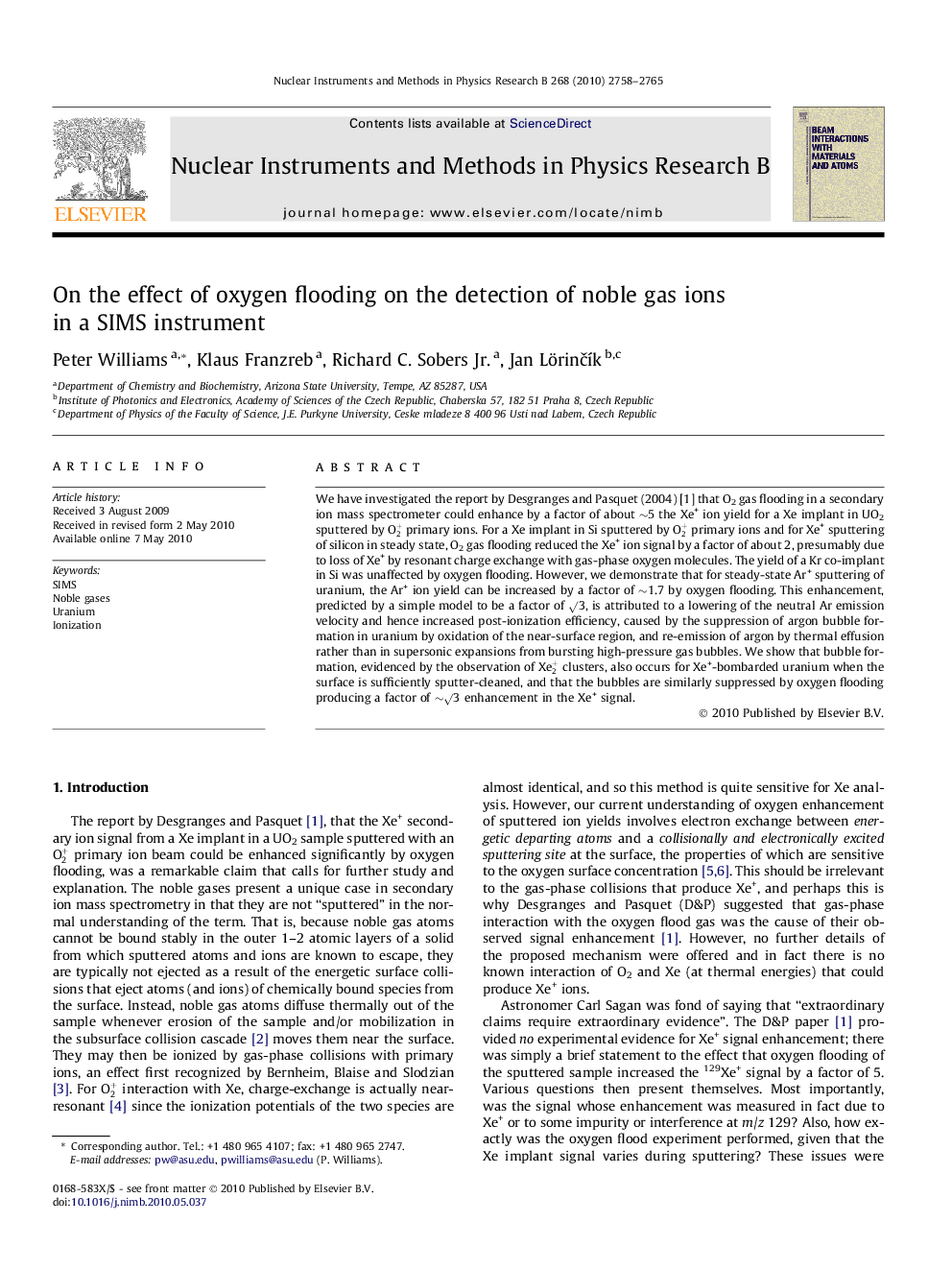| Article ID | Journal | Published Year | Pages | File Type |
|---|---|---|---|---|
| 1681649 | Nuclear Instruments and Methods in Physics Research Section B: Beam Interactions with Materials and Atoms | 2010 | 8 Pages |
We have investigated the report by Desgranges and Pasquet (2004) [1] that O2 gas flooding in a secondary ion mass spectrometer could enhance by a factor of about ∼5 the Xe+ ion yield for a Xe implant in UO2 sputtered by O2+ primary ions. For a Xe implant in Si sputtered by O2+ primary ions and for Xe+ sputtering of silicon in steady state, O2 gas flooding reduced the Xe+ ion signal by a factor of about 2, presumably due to loss of Xe+ by resonant charge exchange with gas-phase oxygen molecules. The yield of a Kr co-implant in Si was unaffected by oxygen flooding. However, we demonstrate that for steady-state Ar+ sputtering of uranium, the Ar+ ion yield can be increased by a factor of ∼1.7 by oxygen flooding. This enhancement, predicted by a simple model to be a factor of √3, is attributed to a lowering of the neutral Ar emission velocity and hence increased post-ionization efficiency, caused by the suppression of argon bubble formation in uranium by oxidation of the near-surface region, and re-emission of argon by thermal effusion rather than in supersonic expansions from bursting high-pressure gas bubbles. We show that bubble formation, evidenced by the observation of Xe2+ clusters, also occurs for Xe+-bombarded uranium when the surface is sufficiently sputter-cleaned, and that the bubbles are similarly suppressed by oxygen flooding producing a factor of ∼√3 enhancement in the Xe+ signal.
